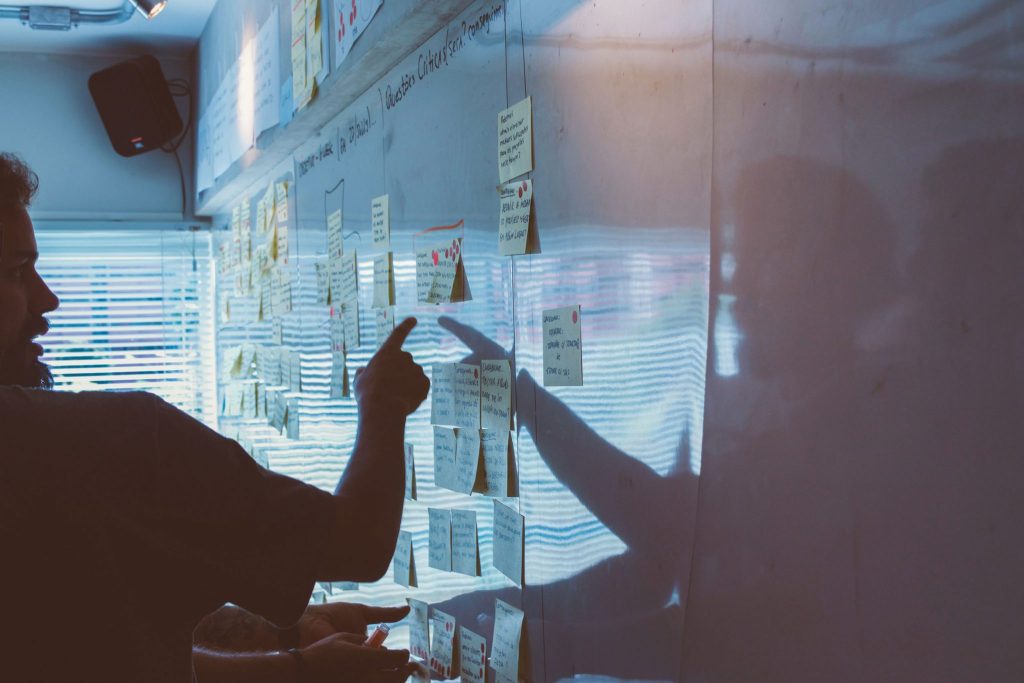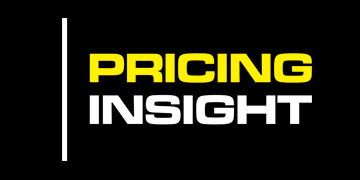250+ planning sessions later, this is what we have found.
Here is a set of guidelines and a checklist to make your next strategy workshop more effective.
Over the 10 years at Pricing Insight we have run over 250 strategy workshops with clients in several different formats. These have included: small executive lead teams, wider business units and sessions at an annual conference where there may be upwards of 50-100 people in the room. Each workshop format has a different set of objectives and dynamics, but there are 5 key factors to take into account when undertaking a strategy workshop session:
- Define the problem being solved and the right team structure/attendees to solve the problem
- The individual: It is an individual every time that is connecting to the material, not the “group”.
- It is about early adopters: Fewer than 20% of the people in the room are predisposed to take action, and the others want to see tangible evidence that the management believe in the actions being suggested.
- The human brain is a cognitive miser. It will filter out information, except for the top 3-5 ideas being discussed.
- It is about action: An action, or set of actions, is required at the end of the workshop or management gathering.
Implications
- Problem:
Defining the problem is the Number One key to running a successful workshop. Ask these questions before embarking on a workshop program:
- What is the trigger-issue reason for trying to solve Problem x?
- What are the range of problems and pains associated with Problem x?
- What are the consequences of not solving Problem x?
A workshop is then designed explore the factors associated with trigger problem x.
We then collaborate to explore solutions–and co-create a future state and a road map to achieve that future state.
- Individual:
We need to ensure that everyone who is in the room for a workshop has a reason for being there and is an important stakeholder to a decision or outcome–or is a participant in the actions being discussed.
Start by reviewing attendees for a workshop. Put their names in a spreadsheet and write next to each name why they should be there. Grade them as:
As – essentials
Bs – good to have but not crucial
Cs – not sure
D – no need to attend, but should at least be informed of the outcomes or add their feedback on the options under consideration
Regarding the Cs, often they are there because of business unit structure or reporting lines. Today, reporting lines often exist in name only and are not practical or functional. Workshops need to be about outcomes and action, so reporting lines are not an ideal method for selecting attendees.
- Early Adopters:
It is not the job of a workshop to convince everyone of the wisdom of an idea. In fact, we have found that fewer than 25% of people in workshops support an idea that is discussed to the extent they will do something about it. Sometimes, the more difficult and abstract ideas to be explored have less than 10% support.
If you have ever been the lead instigator for an idea, you may have found yourself alone. If you do find yourself alone, take heart that almost all great ideas in history were initially rejected by peers.
The important piece here is that finding 2-3 other like minds to drive action is critical. You don’t need to have 10-15 people all in agreement. It will take too long. It is better to create a “minimum viable product” of a concept to present to the team so they can “walk around it” and then decide to proceed to next steps of an implementation.
You can call this “agile”, or “lean”, or whatever term is easiest–but the key is to act fast and use a small amount of resources to get the basic idea validated and tested before presenting to the wider group.
Amazon founder Jeff Bezos has a philosophy about one-way and two-way doors to give guidance to his management teams: If a decision appears to be a two-way door, i.e. reversible with low cost of rework or cancelling, then charge straight through and find out what is on the other side of that door. If the door appears to be a one way, non-reversible decision, then obtain more buy-in, test in multiple ways and obtain sponsorship from above.
- The Brain as “Cognitive Miser”:
The human brain does not like to be overloaded with thinking through complex problems. Research studies have shown that the brain only remembers between 5 – 7 items at a time, and really only understands 3 key concepts with any real certainty.
It is critical to present information that is not new to the brain, to gain greater acceptance and understanding. Too many executives worry about their “thunder being stolen” by revealing the slide deck or information in advance of a meeting or workshop.
To get the most buy-in, share your information pack at last 2 – 3 weeks early with a reminder each week or solicitation of feedback in advance. Think about the dynamics of a concert, and the last concert you went to: What songs did the crowd love the most? The golden oldies and classics, or the obscure B-side song from their latest release? Yes, the brain loves familiarity.
- Action:
The world does not reward thoughts, only actions. There are dozens of ideas that can be generated at a workshop. The best ones often come unexpectedly and feel unfamiliar at first. One of the exercises we like to do is to write out initiatives that range from being described as obvious and easy all the way through to long shots.
One of our favourite phrases is when someone says, “we tried that and it didn’t work” or “that won’t work”. Often this is where the real opportunity or money is. It is crucial to capture all ideas and subsequent actions in a structured format, and by someone who is dedicated to the task.
Workshop pre-planning
By creating a workshop minutes pack template in advance, you allow the minute-taker to follow the structure and see what is relevant to be captured (and what is not so useful to capture). Always have a dedicated note taker who understands the topics and the agenda to be discussed.
Post-workshop support
Put any initiatives into a project management plan tool like Smartsheet or Atlassian’s JIRA core. The cloud approach to project management is especially useful, as you can track action at any time, from any device:
The CEO of the organisation can log in at any time and see how the various teams are progressing with the actions from the workshop.
5 key mistakes made in running strategy workshops:
- Overestimating how much new information can be absorbed and processed in a single session
- Thinking that talk and discussion creates understanding and buy-in (or a solution).
- Underestimating how crucial visual images and diagrams are for helping teams to understand new concepts
- Overestimating how much action will be taken by attendees after a workshop
- Relying on PowerPoint slide decks with lots of bullet points, and standing behind a lectern to present.
In Summary
- Identify the problem to be solved and why a team is best-suited to work on this problem.
- Identify attendees for the workshop and the reason they should attend, vs. who should simply be informed about the workshop.
- Have a detailed agenda and discussion pack developed at least 2 – 3 weeks prior to the strategy workshop.
- Obtain initial draft feedback from attendees.
- Ensure the right people are at the workshop for the right reasons.
- Focus on solving a limited number of problems, if not a single issue.
- Capture ideas and opportunities in a structured way.
- Build an action plan and road map with names and dates.
- Manage all projects in a cloud-based platform for ease of access and distribution of information.
- Break project initiatives down into small sets of action with 2 – 3 people responsible for each action.
- Track and manage progress after the workshop.
Click here to download the whitepaper.






